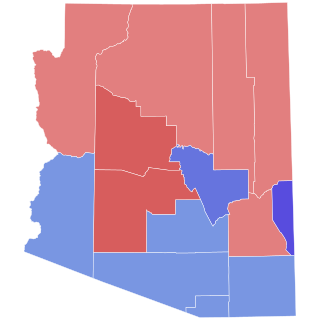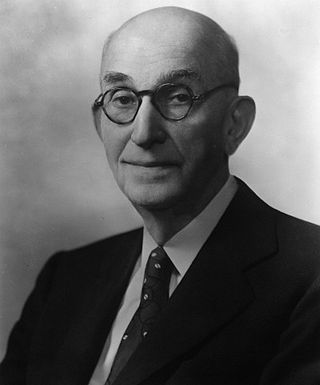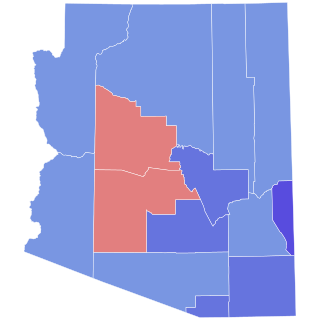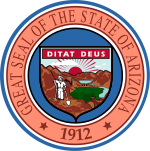
The 1970 United States Senate elections was an election for the United States Senate. It took place on November 3, with the 33 seats of Class 1 contested in regular elections. Special elections were also held to fill vacancies. These races occurred in the middle of Richard Nixon's first term as president. The Democrats lost a net of three seats, while the Republicans and the Conservative Party of New York picked up one net seat each, and former Democrat Harry F. Byrd Jr. was re-elected as an independent.

The 1968 United States Senate elections were elections for the United States Senate. Held on November 5, the 34 seats of Class 3 were contested in regular elections. They coincided with the presidential election of the same year. The Republicans picked up five net seats in the Senate. This saw Republicans win a Senate seat in Florida for the first time since Reconstruction.

The 1964 United States Senate elections were held on November 3. The 33 seats of Class 1 were contested in regular elections. Special elections were also held to fill vacancies. They coincided with the election of President Lyndon B. Johnson by an overwhelming majority, to a full term. His Democratic Party picked up a net two seats from the Republicans. As of 2022, this was the last time either party has had a two-thirds majority in the Senate, which would have hypothetically allowed the Senate Democrats to override a veto, propose constitutional amendments, or convict and expel certain officials without any votes from Senate Republicans. In practice, however, internal divisions effectively prevented the Democrats from doing so. The Senate election coincided with Democratic gains in the House in the same year.

The 1932 United States Senate elections coincided with Democrat Franklin D. Roosevelt's landslide victory over incumbent Herbert Hoover in the presidential election. The 32 seats of Class 3 were contested in regular elections, and special elections were held to fill vacancies.

The United States Senate election of 1930 in Massachusetts was held on November 4, 1930. Incumbent Republican Senator Frederick H. Gillett did not run for re-election. In the open race to succeed him, Democratic Mayor of Fitchburg Marcus A. Coolidge defeated former U.S. Senator William M. Butler.

The 1932 United States Senate elections in Arizona took place on November 8, 1932. Incumbent Democratic U.S. Senator Carl Hayden ran for reelection to a second term, again defeating his 1926 challenger former U.S. Senator Ralph H. Cameron in the general election.

The 1922 United States Senate elections in Arizona took place on November 7, 1922. Incumbent Democratic U.S. Senator Henry F. Ashurst ran for reelection to a third term, defeating Republican nominee James Harvey McClintock in the general election by a wide margin.

The 1934 United States Senate elections in Arizona took place on November 3, 1934. Incumbent Democratic U.S. Senator Henry F. Ashurst ran for reelection to a fifth term, defeating Republican nominee Joseph Edward Thompson in the general election by a wide margin.

The 1940 United States Senate elections in Arizona took place on November 5, 1940. Incumbent Democratic U.S. Senator Henry F. Ashurst ran for reelection to a sixth term, but was defeated in the Democratic primary to challenger Ernest McFarland.

The 1970 United States Senate election in Arizona took place on November 3, 1970. Incumbent Republican U.S. Senator Paul Fannin decided to run for reelection to a second term, running unopposed in the Republican primary. Fannin defeated Democratic nominee Sam Grossman in the general election. This would be the last time until the Republican Revolution of 1994 that Republicans would win Arizona's Class 1 Senate Seat.

The 1920 United States Senate elections in Arizona took place on November 2, 1920. Incumbent Democratic U.S. Senator Marcus A. Smith ran for reelection to a third term, but was defeated by former Delegate to the U.S. House of Representatives from the Arizona Territory Ralph H. Cameron in the general election. Cameron would become the first Republican elected to the office of U.S. Senator from Arizona since the state joined the union in 1912. The same year, Republican Governor Thomas Edward Campbell was reelected to a second term.

The 1926 United States Senate election in Arizona was held on Tuesday November 3, Incumbent Republican Senator Ralph Cameron ran for re-election on his second term, but was defeated by incumbent Democratic Representative Carl Hayden in the general election. Hayden was the longest-serving Senator having been re-elected to six more terms until he retired in 1968.

The 1956 United States Senate election in Arizona took place on November 6, 1956. Incumbent Democratic U.S. Senator Carl Hayden ran for reelection to a sixth term, defeating Republican nominee Attorney General of Arizona Ross F. Jones in the general election.

The 1962 United States Senate election in Arizona took place on November 6, 1962. Incumbent Democratic U.S. Senator Carl Hayden ran for reelection to a seventh term, defeating Republican State Senator Evan Mecham in the general election. Mecham became Governor of Arizona more than two decades later, and was subsequently impeached and removed from office.

The 1928 Arizona gubernatorial election took place on November 6, 1928. Despite a fairly poor economy, a 15-point loss by Al Smith for the Arizona electoral votes, and having served for nearly 6 full terms, Hunt only narrowly lost the general election. Other state Democrats like Senator Ashurst and Representative Douglas both won re-election. John C. Phillips became the second Republican to serve as Arizona Governor, and the first to beat Hunt in a general election.

The 1916 United States Senate elections in Arizona took place on November 7, 1916. Incumbent Democratic U.S. Senator Henry F. Ashurst ran for reelection to a second term, defeating Republican former Territorial Governor Joseph H. Kibbey in the general election by a comfortable margin.

The 1954 Arizona gubernatorial election took place on November 2, 1954. Incumbent Governor John Howard Pyle, the first Republican elected to the office in two decades, ran for reelection for a third term.

The 1964 Arizona gubernatorial election took place on November 3, 1964. Incumbent Governor Paul Fannin decided not to run for reelection to a fourth term as governor, instead deciding to successfully run for the United States Senate when incumbent U.S. Senator Barry Goldwater decided to run for President of the United States.

The 1974 Arizona gubernatorial election took place on November 5, 1974. Incumbent Governor Jack Williams decided not to run for a fourth term as governor. Former United States Ambassador to Bolivia Raúl Héctor Castro, who was the Democratic nominee in 1970, won the Democratic nomination again in 1974, and narrowly won the general election, defeating Republican nominee Russell Williams by 0.85%. Castro was sworn into his first and only term as governor on January 6, 1975.

The 1966 United States Senate election in Minnesota took place on November 8, 1966. Incumbent Democratic U.S. Senator Walter Mondale, who had originally been appointed in 1964 to replace Hubert Humphrey after Humphrey was elected Vice President of the United States, defeated Republican challenger Robert A. Forsythe, to win a full term.






















